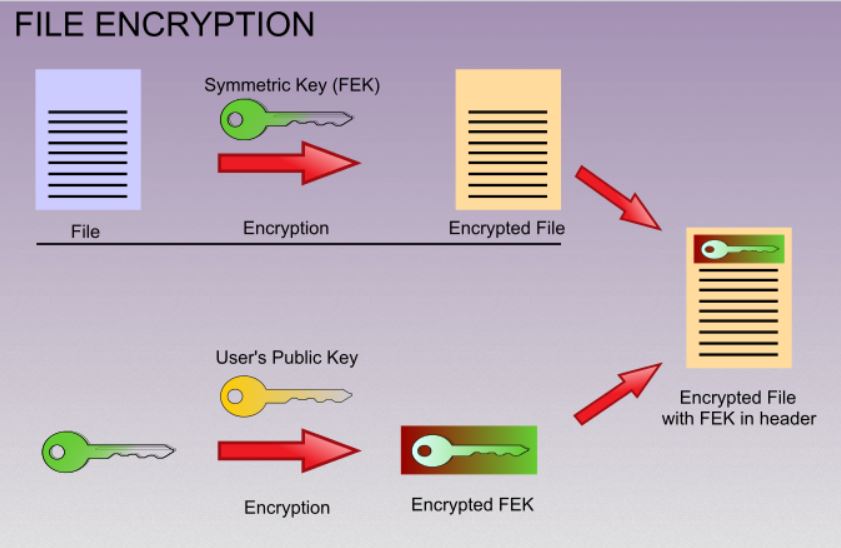

- MACFORT FILE ENCRIPTION INSTALL
- MACFORT FILE ENCRIPTION DRIVER
- MACFORT FILE ENCRIPTION FULL
- MACFORT FILE ENCRIPTION PLUS
- MACFORT FILE ENCRIPTION WINDOWS
Is this vulnerability defeated if you use a APFS/HFS disk password that no specific OSX user accounts are authorized to bypass, as is the case when you encrypt the whole hard drive and then install OSX versus activating File Vault only on a per account basis? In other words, if I don't have the hard drive disk password, but I do have a single user account login/password, nothing is capable of being leaked in this case, correct?Īs the Quicklook database is never decrypted unless you have the disk password in this case, I don't think it is, but would like validation of my thought process as it seems like this mostly pertains to mounted encrypted image files or non-system encrypted drives, not whole disk system drive encryption. * As an aside, here's a vaguely-relevant #1 trending story in Australian media for the past few days (related in a general security sense which most people neglect - not necessarily disk encryption). It's laughable now to think I left it on the floor ("secured" by the 5-pin tumbler lock in my front door) without any kind of data/identity theft* protection for so long.
MACFORT FILE ENCRIPTION FULL
I started using full drive encryption as soon as I started getting faster devices (i.e., not the Nexus 4) - in fact I've only not too long ago reformatted an external backup HDD (WD Green - unremarkable) to use LUKS encryption, and haven't really noticed a noticeable performance hit (Phoronix has some good benchmarks on various types of disk/folder encryption). Of course I like to poke around a new system and reconfigure everything only to immediately forget I made that change. See "Power of Graphics Processing Units May Threaten Password Security" A significantly longer password may hold out for years or decades.I thought it was the default too but now I'm thinking I've just been conditioned into accepting it as a sensible default* and might have automatically enabled it on my own accord after reading the instructions. However, given sufficient resources, like a GPU or FPGA password cracking system, EFS data may be vulnerable within a short period.Ī random 12-character (upper lower and symbol) password may hold out for weeks or months against a password cracking system. Probably not by an adversary with a typical personal computer. If the user uses a decent password, can this data be decrypted (easily?) if it, say, resides on a laptop and that is stolen? The contents of the encrypted folder are as secure as the user's password. With the RSA private key, the attacker can decrypt any FEC stored with any encrypted file and decrypt the file. Given the username and password, an attacker can decrypt the RSA private key. So, If an attacker can get a copy of the SAM file they may be able to discover the user's password with a rainbow table attack. The user's password is hashed and stored in the SAM file.
MACFORT FILE ENCRIPTION PLUS
The user's RSA private key is encrypted using a hash of the user's NTLM password hash plus the user name. How is the user's RSA private key protected? The File Encryption Key (FEC) is encrypted with the user's RSA public key and attached to the encrypted file.
MACFORT FILE ENCRIPTION WINDOWS
Windows 7, Windows Server 2008 R2 for for AES, DES-X, Triple DES: RSA 1024-bits (default), 2048-bits, 4096-bits, 8192-bits, 16384-bit How is the encryption key protected?

Windows 7, Windows Server 2008 R2 for ECC: 256-bit (default), 384-bit, 512-bit

Windows 7, Windows Server 2008 R2: "mixed-mode" operation of ECC and RSA algorithm What key size does it used? Windows XP SP1 - Windows Server 2008: AES-256 symmetric (default), DES-X (available), Triple DES (available) Windows XP (no service pack): DES-X (default), Triple DES (available) The bits on the disk have not changed but the protocol for processing the bits to and from the disk has added features in Windows 7.
MACFORT FILE ENCRIPTION DRIVER
However the NTFS driver has gone from 5.1 on windows XP to 6.1 on Windows 7. NTFS on disk format 3.1 was released with Windows XP. The folder is actually a specialized type of file which applies the same key to all files within the folder. EFS is a file level encryption within NTFS. How secure is the data in a encrypted NTFS folder on Windows (XP, 7)? What is EFS?įolders on NTFS are encrypted with a specialized subset of NTFS called Encrypting File System(EFS).


 0 kommentar(er)
0 kommentar(er)
